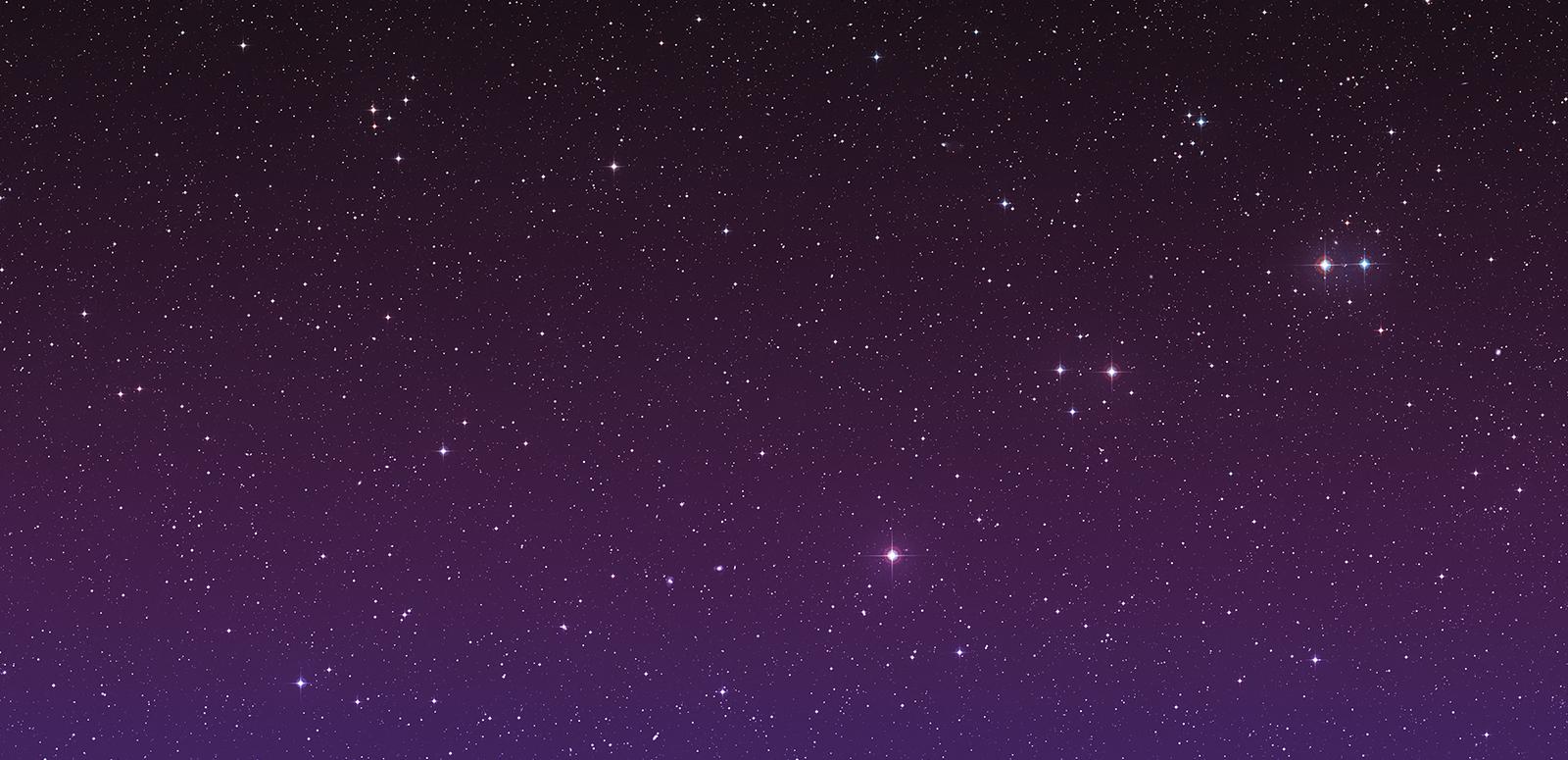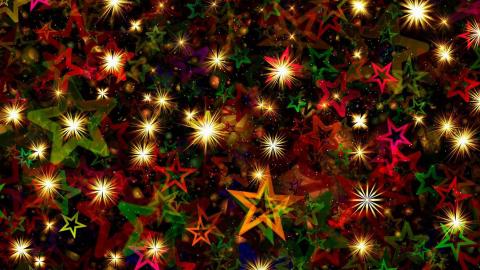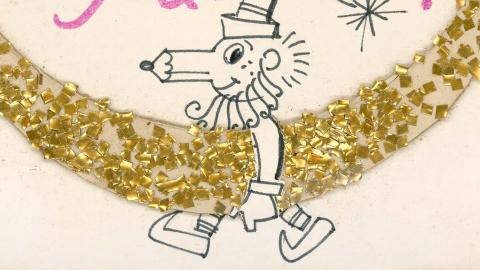
Plan your visit
Around the web
Contact
Email sign up
Never miss a moment. Stories, news and experiences celebrating Australia's audiovisual culture direct to your inbox.
Donate
Support us to grow, preserve and share our collection of more than 100 years of film, sound, broadcast and games by making a financial donation. If you’d like to donate an item to the collection, you can do so via our collection offer form.

12 Days of Christmas
Australian Christmas music - Advent Calendar
Like a fine box of assorted chocolates, our Australian Christmas Music collection has something for all tastes.
We have cherrypicked a diverse collection of Christmas songs from the NFSA collection for your listening pleasure.
From traditional to humorous, respectful to risqué, this collection showcases the creativity and diversity of Australia’s musical talent (plus a couple of New Zealanders).
See also Australian Christmas Songs: 12 More Days of Christmas for even more!
This collection was first published in an Advent calendar format, with a new song added every day until it was completed with 24 tunes.
WARNING: this collection contains names, images or voices of deceased Aboriginal and Torres Strait Islander people.
‘Deck the Halls’ is from the album This Christmas by John Travolta and Olivia Newton-John (1948–2022), released 9 November 2012 - just in time to be the perfect stocking-filler. The album came about when Newton-John reminded Travolta that their 1978 offering Grease saw the pair release the best-selling duet on the charts. When it comes to Christmas albums, our Livvie is a serial offender: This Christmas was her third seasonal offering.
Olivia describes the inspiration behind the album as 'the audio equivalent of those classic network TV specials hosted from the stars' homes; an intimate, warm set of traditional holiday songs'. The album’s guest stars are testament to the star power of Newton-John and Travolta with guest appearances by Tony Bennett, Barbara Streisand and Cliff Richard.
On this track, American singer-songwriter and guitarist James Taylor delivers a beautiful sparse production to a rhythm not often heard on such a traditional carol, reminiscent of merry minstrels and medieval times. The flute and fretless bass parts are standouts on this track as is the balance between Olivia’s harmonies and ad libs against Travolta’s vocals.
‘Carol of the Birds’ is from the album Australian Christmas Carols and performed by the South Australia Symphony Orchestra and Adelaide Singers. Conducted by Patrick Thomas, who began his career playing flute in the ABC's Brisbane Symphony Orchestra, Thomas went on to a career conducting orchestras across Australia, South Africa and Europe.
Written in 1948 by musician WG James and lyricist John Wheeler, ‘Carol of the Birds’ is a significant shift away from European Christmas carols depicting scenes and features from cold European winters. Beautifully composed playful lyrics such as ‘… brolgas are dancing, lifting their feet like warhorses prancing’ warms our hearts and showcase our abundant native bird life and gives a more authentic picture of an Australian Christmas. The word ‘Orana’ is from Aboriginal language and means ‘Welcome’.
With a bright string section rising above the Adelaide Singers’ cheery vocals, the orchestra offers up a counterbalance of dramatic percussion in the form of timpani. The recording from 1969 is dynamic and full and would have been recorded as a live performance.
‘How to Make Gravy’ has a cultish following these days; with five million downloads, a legion of Kelly’s fans have claimed 21 December as the official how-to-make-gravy day.
Kelly rolls out his protagonist for a third time, following ‘To Her Door’ (1987) and ‘Love Never Runs on Time’ (1994). This time Joe finds himself incarcerated and heading into Christmas, hoping to be out by July with good behaviour. The lyrics centre on his remorse for his actions and the reality that he will be apart from his family for Christmas.
In his correspondence to his brother, Joe also verbalises his fear that his brother may make advances on Rita (Joe’s partner) as he know his brother likes her and pleads with him not to stab him in the back and make a move on her.
While Joe may be a character from Kelly’s imagination the gravy recipe is not, being a family standard passed down by Kelly’s then father-in-law, when he was married to Hilary Brown (they divorced in 1984).
‘How to Make Gravy’ was written specifically for the charity record Spirit of Christmas, which has been produced each year since 1993 with proceeds going to the Salvation Army. Fast forward to 2018 and Paul Kelly is touring a ‘How to Make Gravy’ series of concerts around the country, with guest stars such as Julia and Angus Stone.
Written in 1960 ‘Six White Boomers’ is another Christmas song with a local theme; Santa unhooks his reindeers and delivers Christmas presents to Australian children with the aid of six large white kangaroos. As with any good story, not all goes well and Santa is enlisted to help a baby joey find his mother.
Russell Coight first appeared on our televisions in 2001 in the series All Aussie Adventures. The inept survival and wildlife expert is a fictional character created by actor Glenn Robbins. After a 14-year hiatus a petition was sent to Network Ten to bring the show back and production started in 2016 for series three.
Robbins’ version of ‘Six White Boomers’ is an animated rendition and not without charm, a perfect song for the larrikin Russell Coight. More produced than the original version this track features the addition of female backing vocals reinforcing the chorus and well placed melodic ‘oohs’ giving it a more contemporary feel. Atmospheric sound effects across the introduction, of a sort more often heard on television than music recordings, work well and add to a track that is sure to put a smile on your face.
'Hosanna to the Son of David' is performed by the Choir of St George’s Cathedral; the recording took place within the cathedral, located at 38 St George’s Terrace, Perth. Being an a cappella piece, the acoustics of the room become an integral part of the recording and St George’s Cathedral does not disappoint. As the vocal notes decay we hear the magnificent natural reverb of the cathedral itself.
Written by Thomas Weelkes (1576–1623) and traditionally performed in both English and Latin, the source of the lyrics is the Gospels of Matthew 21 and Luke 19 from the New Testament of the Christian Bible. Weelkes was a prolific writer of church music; he was also employed most of his life as a church organist at Chichester Cathedral.
His life was not without controversy; in 1616 he was reported to the Bishop for being ‘a common drunkard and notorious swearer and blasphemer’. Following another indiscretion the Dean dismissed Weelkes for being drunk at the organ and using bad language during divine service. He was however reinstated and remained in the post until his death, although his behaviour did not improve.
'Little Donkey' was first released in 1959 by English singer Gracie Fields. It’s a popular Christmas tune covered by many artists; its most successful version was by the Danish singing duo of Nina and Frederik in 1960. Written by English songwriter Eric Boswell, ‘Little Donkey’ has become a traditional part of the festive season and nativity plays across many primary schools and is popular with children around the world.
New Zealand-born Neva Eder’s cover of ‘Little Donkey’ takes advantage of her folk background with the simplest of piano accompaniment and a children’s choir to strengthen the chorus. This beautiful rolling version is in keeping with the theme of a donkey and his important journey.
In the 21st Century ‘Little Donkey’ has become something of a parody with comedians such as Russell Brand and the team of Ricky Gervais and Karl Pilkington using the song for their own comedic fodder. ‘Little Donkey’ made the ABC’s 2016 list of top ten worst Christmas carols with comments such as 'The donkey doesn't deserve a song, but at least the writers made it as dull and droning as possible’.
Have a listen and decide for yourself.
'There’s No Snow Here (At Christmas Time)' is a Christmas song paying homage to our Southern Hemisphere festive style. The cover for the single reinforces this sentiment with illustrations depicting Christmas Day at Sydney’s Bronte beach, complete with sumptuous fresh prawns and tropical fruits.
Penned and performed by The Delltones in 1986, the record’s production is indicative of the style of the day with its driving synth bassline, programmed electronic drums and mandatory snare drum placed just below the vocal level in the mix. The reverb-saturated saxophone solo also gives us a clue we are in the 1980s. The B-side features a cover of the John Lennon-Yoko Ono classic ‘Happy Christmas (War is Over)’.
The Delltones began in 1958 with their distinctive vocal harmonies in the rhythm and blues ‘doo wop’ style of the 1940s. Fast forward 60 years and the band has a back catalogue of 20 albums and hold the title of Australia’s longest-running performing band with an original member (Pee Wee Wilson). At the age of 78, Wilson is still entrancing Australian audiences.
A live version of ‘There’s No Snow Here (At Christmas time)’ appears on the album Carols in the Domain, also recorded in 1986. Carols in the Domain is one of Australia’s largest free public events and began in 1983.
'Silent Night' was first performed 200 years ago this Christmas Eve in Salzburg, Austria. Schoolteacher and composer Franz Xaver Gruber wrote the popular carol with lyrics by Catholic priest Joseph Mohr. UNESCO declared the song an intangible cultural heritage in 2011.
Deviating slightly from the original melody, Archie Roach’s arrangement of 'Silent Night' fits his voice like a glove. With a rhythm section of acoustic and slide guitars the drum track falls just behind the beat and delivers a beautiful laid-back interpretation of this well-known carol. Archie’s voice is proudly mixed in front of the backing track and it is hard not to notice the reverence in his performance.
'Silent Night' appears on the Salvation Army Charity album, The Spirit of Christmas 2008. Archie Roach has a strong connection to the Salvation Army, having met his future wife and musical soulmate, Ruby Hunter at one of their drop-in centres in Adelaide in 1971. Archie acknowledges Ruby as giving him the courage to tell his story through song and perform live.
A voice that has been forged out of both sadness and strength, Archie is a big believer in the healing power of music. In 2017 he told The Guardian, 'Having your own voice is very powerful and healing. When I was young music helped me stop drinking. I turned a corner and music was great therapy for me – it still is.'
'Christmas Kangaroo' was released in 1964 by the Australian travelling country music family The Blanches. The song was written by Arthur and Bernice and performed by their daughter, Jewel.
This song is as cute as any child-performed novelty song can be, helped along by Jewel’s inability to pronounce ‘R’s so we have ‘Brodoulph’ deliver toys this Christmas. Jewel’s vocal is strong with a snappy confidence which is understandable as she began performing with her parents at the age of three. The Kanga-rollers provide backing vocals and give the record balance and professionalism as they are, without doubt, session singers with a tight harmonic sound.
A track obviously written as a vehicle to cement the family’s career in the United States, the lyrics are a mix of Australiana and Hollywood landmarks such as ‘Boom boom boom down Beverly Boulevard and we’ll hop hop the Hollywood Freeway too’. The Blanch family throws caution to the wind with the lines ‘Dinka mumma kanga’ and ‘A bonza little joey in his pouch’. To reinforce the song’s international flavor, the record label proclaims ‘Produced in Hollywood’.
Jewel Blanch and her family lived between Australia and Nashville as their respected careers spanned decades. Jewel also ventured into television appearing in well-known American drama series such as Lassie, Bonanza and Mod Squad; in Australia Jewel appeared in six episodes of the Grundy’s drama Young Doctors.
In 1984 Jewel co- founded the Ten Ten Music Group in Nashville with then husband, New Zealand-born Barry Coburn. Her years of songwriting, recording and performing held her in good stead to spot up and coming artists, one of which was a young Australian trying his luck in Nashville. Jewel signed Keith Urban to Ten Ten and helped shape his career for 12 years. She is also a member of the Nashville publishing group Chicks with Hits.
If you like your Christmas with hard-hitting rock’n’roll, AC/DC’s offering may be just the song. ‘Mistress for Christmas’ is from the album The Razors Edge which opens with the now classic ‘Thunderstruck’. The liner notes attest to the band maturing and yet still having a principal belief in hard liquor, cheap sex, fast money and the endless quest for a good time.
The production on this album was by Canadian rock producer Bruce Fairbairn, known for his work with Aerosmith and Bon Jovi, to name a few; it is the first time original band member Phil Rudd is not behind the drums. The band is as tight as any previous or later line-up with the driving force behind all AC/DC songs being that of Malcolm and Angus Young.
With the exception of Christmas bells and a spoken introduction, this track is as hard-hitting as any AC/DC song with its solid rhythm section and soaring interplay between Angus’s guitar riff and Johnson’s vocal dynamics. With lyrics such as ‘Love ‘em and leave ‘em and on with the show’, ‘Mistress for Christmas’ may not be your average Christmas carol but it sure sounds good when you crank up the volume.
‘Have Yourself a Merry Little Christmas’ was written for the MGM musical Meet Me in St Louis (Vincente Minnelli, USA, 1944). The song is performed by Judy Garland in a touching scene set on Christmas Eve as she comforts her sister as the family fear they may be leaving their happy home in St Louis and moving to New York City. Written by Hugh Martin and Ralph Blane the original lyrics are very different to the version we know today: ‘Have yourself a merry little Christmas. It may be your last. Next year we may all be living in the past.’ These lyrics were rejected as being too depressing.
A million miles from the now legendary hard-edged performance at Sunbury and his dynamic wild-man-of-rock persona, Thorpe’s vocal performance on this track is subdued yet captivating. It showcases the timbre of his voice and is well suited to this song which requires a traditional ‘crooning’-style vocal. Thorpe holds true to his blues roots with the guitar arrangement which consists of muted chords and soaring guitar lines and solo.
Becoming disgruntled with his career direction and middle-of-the-road image in the mid-1960s, Thorpe saw rock’n’roll gaining strength in the USA and UK and was ready to take a leap of faith with his own musical future. Having just been declared bankrupt Thorpe was certain the only way was up from this point. A seminal moment for Thorpe’s band The Aztecs came in 1968 with the addition of Australia’s loudest guitarist, Lobby Loyde. The reinvention of Billy Thorpe is a story which shows the tenacity and vision of the man as an artist.
This is the second Judy Garland track that Billy Thorpe and the Aztecs have covered; back in 1974 the band had a hit with ‘Over the Rainbow’ from another MGM movie, The Wizard of Oz (1939). ‘Have Yourself a Merry Little Christmas’ has been covered by many artists such as Frank Sinatra, Kelly Clarkson, Rosemary Clooney, Christina Aguilera and Michael Bublé. The Billy Thorpe and the Aztecs version stands proud amongst these artists. No Christmas ‘Bah! Humbug!’ around here.
‘Hark the Herald Angels Sing’ is performed by the Australian Girls’ Choir and the National Boys’ Choir from the album Australia’s Christmas Spirit. The choirs came together for the Qantas 1998 advertising campaign featuring Peter Allen’s song ‘I Still Call Australia Home’. The campaign featured amazing footage of the young choristers performing in exotic locations such as a glacier in Argentina, a Maasai village in Africa, amongst the Terracotta Warriors in China, and in Kings Canyon in the Northern Territory.
The choirs’ strong rich sound sits well with the light yet powerful orchestration. The production team behind this album have a pop pedigree of note, and have left their mark on the overall sound of this album. Engineer Richard Lush started his career at the famous Abbey Road Studios in the UK learning his trade with luminaries such as Sir George Martin and Geoff Emerick. Lush is credited as the second engineer on the iconic Beatles Album, Sgt Pepper’s Lonely Hearts Club Band. Moving to Australia in 1970 Lush went on to record many Australian artists including Sherbet, Jon English and Billy Field.
Producer Les Gock’s career goes back to 1972 as the lead guitarist and songwriter in the glam rock band, Hush. Gock turned his talents to jingle writing and created Song Zu after the band’s demise. Starting with just himself and wife Mulan, the successful company was sold some 25 years later complete with a staff of 40 and a reputation as the best jingle production house in Australia.
The orchestra on ‘Hark the Herald Angels Sing’ was recorded at Allan Eaton Studios in Melbourne, which since the 1980s has been the go-to studio for recording string sections; their recording space can hold a 60-piece orchestra. Sit back and enjoy!
More to explore

Australian Christmas music - Advent Calendar: 12 More Days of Christmas
Our 12 More Days of Christmas collection of Australian Christmas Music has something for all tastes.

Australian Christmas stories
Dreaming of a white Christmas? Not in Australia!

Mr Squiggle's Christmas cards
This collection of hand-illustrated greeting cards from Mr Squiggle creator Norman Hetherington to Pat Lovell is representative of a wonderful working friendship.
The National Film and Sound Archive of Australia acknowledges Australia’s Aboriginal and Torres Strait Islander peoples as the Traditional Custodians of the land on which we work and live and gives respect to their Elders both past and present.